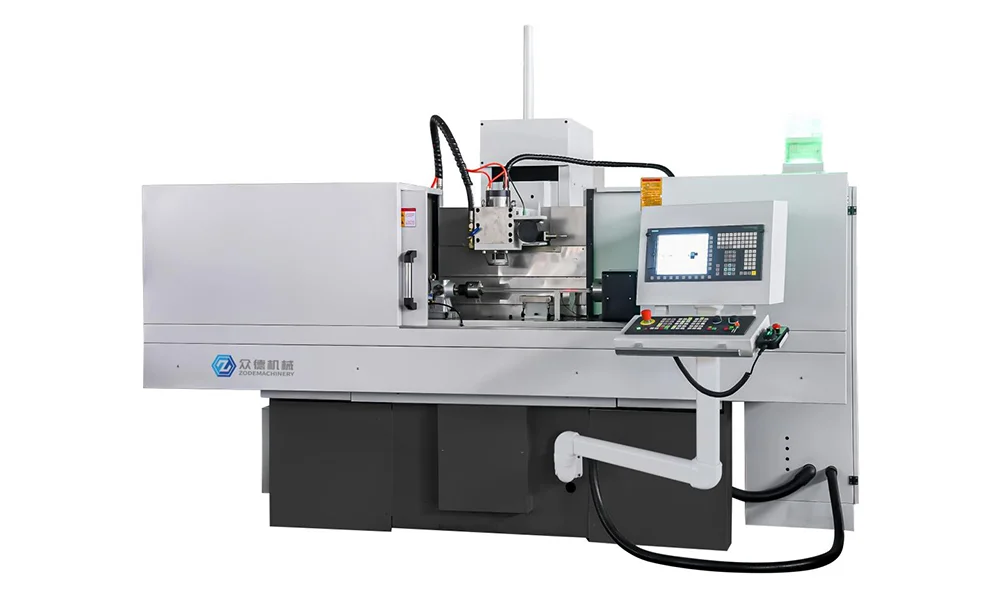- This topic is empty.
-
AuthorPosts
-
2025-10-11 at 6:33 pm #5255
The manufacturing industry has undergone dramatic transformation in recent decades. From manual grinding techniques to highly automated processes, surface finishing has always been central to component quality and durability. Today, the 3 axis CNC surface grinder represents one of the most advanced developments in precision engineering. By combining computer numerical control with three-axis functionality, it offers manufacturers a pathway to achieve tighter tolerances, smoother finishes, and greater consistency in large-scale production. In this blog post, Nantong Zode, a high quality metal surface grinder machine factory, will share the benefits of automatic 3 axis CNC surface grinder in precision engineering.
Why Three-Axis Grinding Technology Matters?
A conventional surface grinder typically operates in two axes, limiting flexibility in machining complex workpieces. With the introduction of a 3 axis CNC grinding system, manufacturers gain enhanced control over the X, Y, and Z axes. This expanded motion range allows for:
-
Intricate grinding of irregular geometries.
-
Automated multi-surface finishing without repositioning.
-
Consistent material removal in high-volume production runs.
Such advancements make three-axis automation not just an upgrade, but a necessity for industries that demand absolute accuracy, such as aerospace, mold-making, and medical device production.
Automatic 3 Axis CNC Surface Grinder in Precision Engineering
The phrase “automatic” in automatic CNC surface grinder extends beyond convenience—it speaks to a shift toward intelligent machining. Automated cycle programming reduces manual input, while integrated digital interfaces ensure repeatable accuracy. The ability to predefine feed rates, grinding depth, and finishing passes allows engineers to execute tasks that were once labor-intensive with minimal operator intervention.
This automation also supports lean manufacturing practices, cutting down on setup time, improving throughput, and reducing operator fatigue. The result is an environment where precision is no longer dependent on human skill alone but reinforced by computer-guided repeatability.
Role of CNC Surface Grinding in High-Performance Industries
Aerospace and Defense
In aerospace, every component—whether turbine blades or landing gear parts—must meet exacting tolerances. A 3 axis surface grinder with CNC programming provides the consistency and precision required for these safety-critical applications.
Automotive Manufacturing
From engine blocks to transmission components, surface flatness directly affects performance. Automated surface grinding ensures durability and reliability in high-stress automotive parts.
Electronics and Semiconductor Production
Micro-level flatness is vital in semiconductors. The ability of CNC grinding machines to operate within micron tolerances makes them indispensable in electronics fabrication.

Integration of Plasma-Cooled Spindles and Modern Enhancements
Modern versions of the automatic 3 axis CNC surface grinder are no longer limited to traditional grinding functions. Some advanced models integrate high-speed spindles, plasma cooling systems, and adaptive feed controls. These features allow for continuous operation even in high-humidity or thermally unstable environments.
In addition, built-in diagnostic software and smart sensors are transforming grinding machines into part of the Industry 4.0 ecosystem. By collecting and analyzing real-time data, these grinders not only perform tasks but also predict maintenance requirements, minimizing downtime and optimizing tool life.
Comparing CNC Surface Grinder Designs
Not all machines labeled as 3 axis CNC grinders are equal. Their performance depends on key design elements such as:
-
Spindle Power: Determines the ability to handle harder materials like titanium or tool steel.
-
Worktable Dimensions: Impacts the size of components that can be processed.
-
Automation Level: Some grinders allow for robotic integration, enabling automated loading and unloading.
-
Software Compatibility: Machines with user-friendly interfaces and CAD/CAM connectivity provide greater flexibility in complex part production.
By evaluating these aspects, businesses can select the surface grinding system most aligned with their operational needs.
Redefining Productivity with Automatic Grinding Cycles
The automation of grinding cycles in a 3 axis CNC machine fundamentally changes workshop dynamics. Instead of constant operator supervision, engineers can now oversee multiple machines simultaneously. Once a grinding program is set, the machine executes tasks with unmatched consistency.
For example:
-
Multi-pass grinding operations can be completed in one setup.
-
Automatic compensation for wheel wear ensures dimensional stability.
-
Integrated coolant systems extend tool life while maintaining superior surface finish.
This efficiency translates into reduced waste, lower costs per unit, and greater overall productivity.
Sustainability and Surface Grinding Efficiency
As industries push toward greener practices, the automatic CNC surface grinder plays an important role in resource efficiency. By minimizing material wastage and optimizing grinding wheel usage, manufacturers reduce their environmental footprint. In addition, energy-efficient servo motors and low-friction guideways help lower power consumption without compromising performance.
Sustainability is no longer a secondary consideration but a competitive advantage—making advanced grinding technology both a financial and environmental investment.
Human Factor in CNC Surface Grinding
While automation takes center stage, the role of skilled operators should not be overlooked. The 3 axis CNC surface grinder empowers machinists rather than replaces them. By shifting manual grinding tasks into automated cycles, operators can focus on programming, quality control, and process optimization. This transition elevates workforce skill levels, ensuring that human expertise is applied where it adds the most value.
Conclusion
The rise of the automatic 3 axis CNC surface grinder marks a pivotal moment in the manufacturing sector. More than just a tool for material removal, it represents a fusion of precision, automation, and innovation. From aerospace to electronics, industries now rely on these machines to push the limits of accuracy, efficiency, and sustainability.
http://www.zodemc.com
Nantong Zode -
-
AuthorPosts
- You must be logged in to reply to this topic.